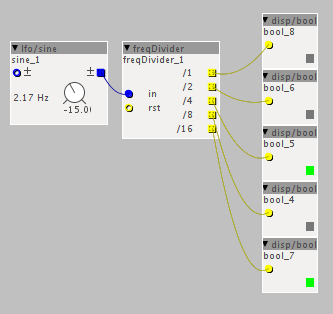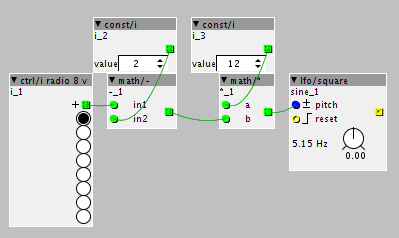I pointed this out in the clock divider thread here ... but its perhaps not obvious.
however, I don't think low level objects can be named by application, they have to be function, the fact that binary is a great way to do clock division is just an 'implementation trick'.
but I agree, once we start getting some higher level blocks, these will have more meaningful names.
as an aside, this was why I put the sequencer tutorial in.. as I realised it was a common task, that perhaps used objects in a less than obvious way, perhaps a clock divider tutorial would be an idea?
(Im kind of in two mind about a clock divider sub module, as its just two objects, a counter + decoder, so once you know this, is there a really a need for an axs?)




